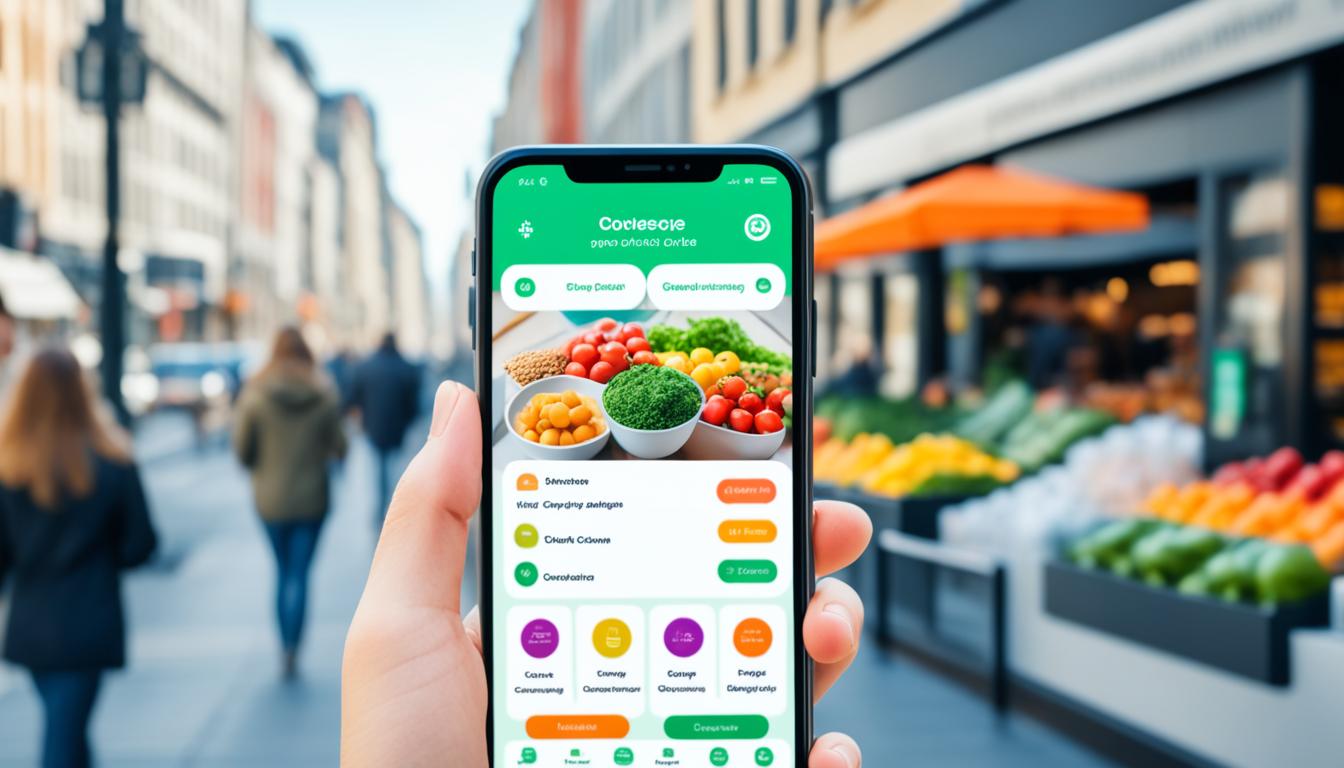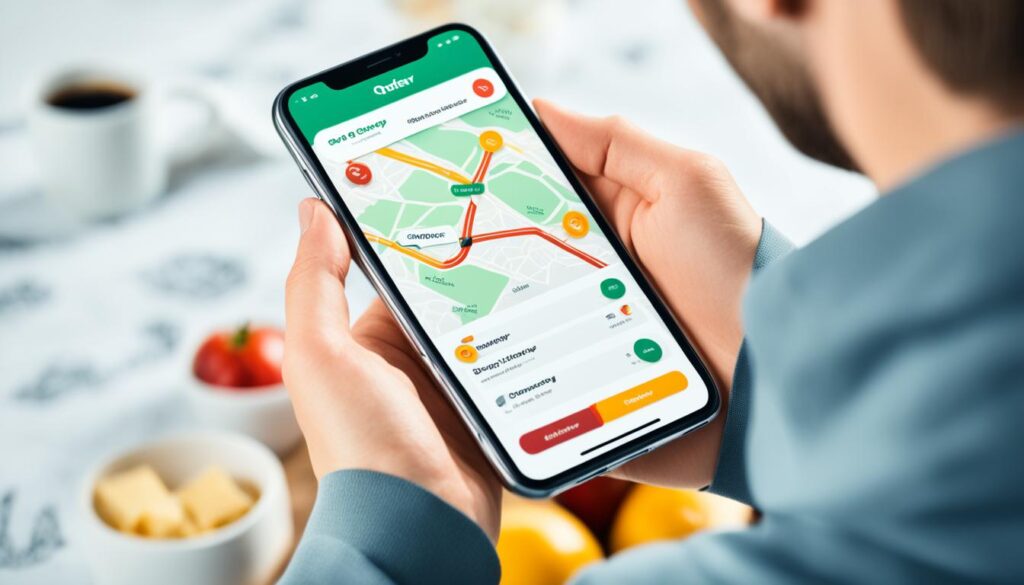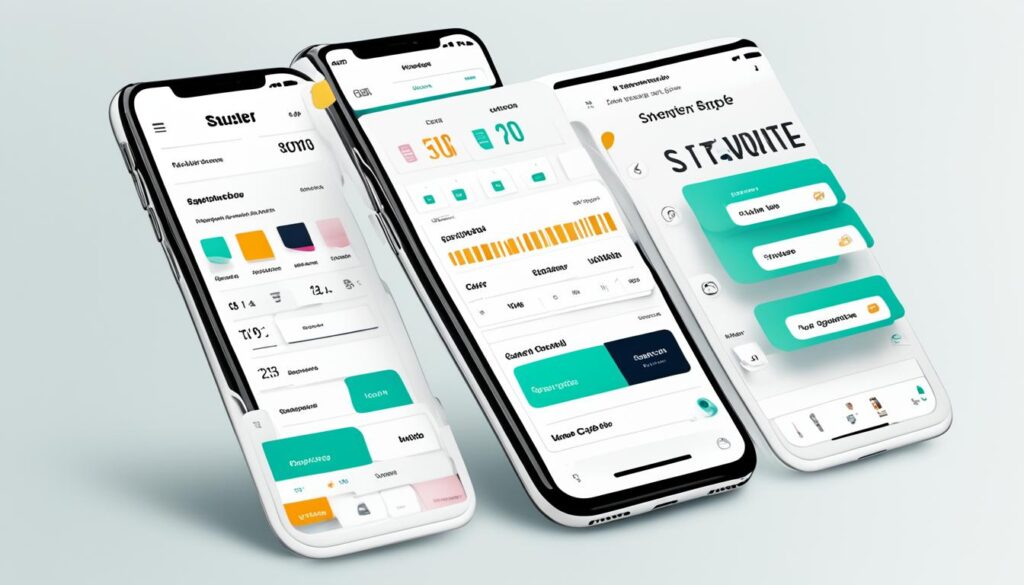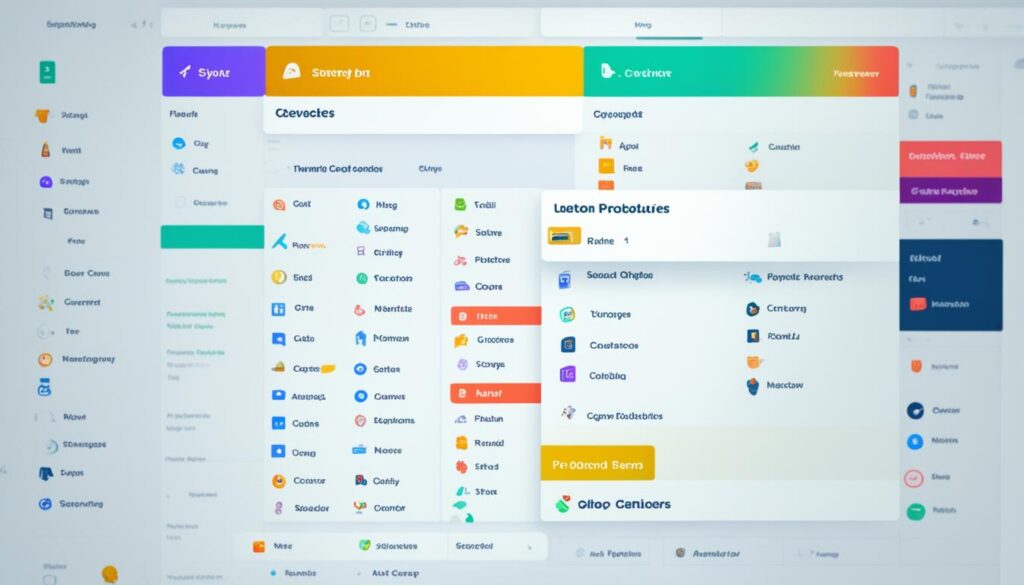In today’s fast-paced world, people want shopping to be easy and personal. They look for apps that offer convenience and quick results. On-demand personal shopping apps are changing the game in retail. They meet the needs of tech-savvy shoppers and give businesses a way to stand out with unique shopping experiences and deliveries.
This guide will take you into the world of on-demand personal shopping apps. We’ll cover the main benefits, design tips, and advanced features that make shopping with your brand special. You’ll learn about AI-powered personalization and augmented reality to create a smooth, engaging shopping experience. This will help you shine in the e-commerce world.
Table of Contents
Key Takeaways
- Understand the growing demand for personalized shopping experiences and on-demand delivery services.
- Learn how to design a user-friendly app interface that enhances the overall shopping journey.
- Discover the integration of advanced features like AI-powered personalization and augmented reality to elevate the customer experience.
- Explore strategies for building a loyal customer base through reward programs and personalized offers.
- Ensure compliance with data privacy and security regulations to build trust and maintain customer confidence.
Understanding the Concept of On-Demand Personal Shopping Apps
On-demand personal shopping apps have changed how we shop online. They make shopping easy and fun. These apps use new tech to give users product tips, quick checkout, and flexible delivery. This changes how we shop.
At the core, on-demand shopping lets customers find products that fit their likes. These apps use data and AI to offer personal shopping services. They guess what users want, making shopping personal.
People love these apps for their ease and speed. They fit the need for e-commerce convenience and mobile retail trends. With just a few clicks, customers can pick and get their items delivered, changing shopping for the better.
These apps give users personalized product tips, easy checkout, and flexible delivery. They offer a new way to shop that meets today’s consumer needs.
“On-demand personal shopping apps are reshaping the retail industry, empowering consumers with a level of convenience and personalization that was once unimaginable.”
Benefits of Offering Tailored Shopping Experiences
Using on-demand personal shopping apps brings many benefits for both businesses and shoppers. These apps offer AI-powered recommendations that match what customers like, making shopping more enjoyable. This leads to higher retail customer satisfaction.
Personalized Recommendations
These apps use smart algorithms and machine learning to understand what customers want. They look at what customers browse and buy, and their likes. This way, they can give personalized shopping experiences. Customers get product suggestions that fit their needs and interests.
Time-Saving Convenience
On-demand shopping apps also make shopping easy and quick. They save time by avoiding the need to go to stores, look around, and carry bags. This makes shopping fit into a busy life, offering a smooth and efficient way to shop.
“By using AI and machine learning, on-demand personal shopping apps change the way we shop. They give us personalized shopping experiences and save time, making shopping better for everyone.”
Designing a User-Friendly App Interface
Making a smooth mobile app design is key for an on-demand personal shopping app’s success. By focusing on the user, businesses can make a platform that is engaging, easy to use, and encourages people to come back. The app’s interface is crucial, balancing mobile app design, user experience, and e-commerce app development.
A good interface starts with a clean layout that makes intuitive navigation easy. Customers should quickly find products, add them to their cart, and check out without hassle. Having clear product info, like good images and detailed descriptions, helps shoppers decide. Features like wish lists and one-click checkout make buying easier.
The app’s look also matters a lot for keeping users interested. A design that is both beautiful and easy to use, with great colors, fonts, and pictures, makes shopping memorable. Finding the right mix of looks and function helps create a personal shopping app that grabs customers and keeps them coming back.
“Designing a user-friendly interface is not just about aesthetics – it’s about creating an effortless and delightful shopping experience that keeps customers coming back.”
| Key Elements of a User-Friendly App Interface | Benefits |
|---|---|
|
|
By designing a user-friendly interface, businesses can offer a shopping experience that meets customers’ needs and stands out. This thoughtful approach to mobile app design and user experience can help on-demand e-commerce app development ventures grow and succeed.
Integrating Advanced Product Search and Filtering
In today’s on-demand shopping apps, finding and filtering products is key. Advanced search and filtering make it easy for users to look through a huge product list. This makes shopping more personal and fun.
Category-Based Browsing
With category-based browsing, users can easily find what they need. They can look through different product groups to find exactly what they want. Category-based browsing is a big part of making shopping easy and personal.
Intelligent Search Functionality
Intelligent search functionality adds to the shopping experience. It uses smart algorithms and user data to show users the best products. This means users get products they might like, and the app knows what they want.
Putting together product search and filtering, category-based browsing, and intelligent search makes shopping smooth. Customers can easily pick products, making their shopping trips more enjoyable.
Building a Robust Inventory Management System
Creating a strong inventory management system is key for an on-demand personal shopping app’s success. It should give real-time updates on product availability. It must also make order fulfillment efficient and work well with the app’s design. This ensures customers get the latest inventory information.
An effective system for an on-demand app should focus on several important areas of e-commerce logistics:
- Real-time product availability tracking: The system must always check and update product stock levels. This way, customers know what’s in stock.
- Automated order fulfillment processes: The system should make ordering and delivering products fast and smooth.
- Seamless integration with the app’s user interface: Customers should find it easy to see and use the latest inventory information in the app. This helps them make smart choices when buying.
With a strong inventory management system, on-demand apps can make customers happier, grow the business, and succeed.
“Effective inventory management is the backbone of a successful e-commerce operation, ensuring reliable product availability and efficient order fulfillment.” – John Smith, Logistics Analyst
| Key Inventory Management Metrics | Description |
|---|---|
| Inventory Turnover Ratio | Measures the rate at which inventory is sold and replaced over a given period. |
| Days of Inventory on Hand | Estimates the average number of days a company holds its inventory before selling it. |
| Stockout Frequency | Tracks the number of times a product is out of stock, indicating potential issues with inventory management. |
By using a strong inventory management system, on-demand apps can make customers happier, grow the business, and succeed.
Creating On-Demand Personal Shopping Apps
Creating an on-demand personal shopping app needs a careful plan. It must blend the latest on-demand app development and e-commerce app features. This way, businesses can make mobile shopping platforms that meet the changing needs of today’s shoppers.
A key part of a great on-demand app is making sure users have a smooth experience. This means designing an easy-to-use interface. It should use retail technology implementation to give personalized advice, make browsing easy, and handle orders well.
- Comprehensive product catalog and search functionality
- Intelligent recommendation algorithms to suggest tailored items
- Convenient in-app purchasing and secure payment integration
- Flexible delivery options, including same-day and scheduled deliveries
- Personalized user profiles and order history tracking
Investing in a strong on-demand app can improve the shopping experience and give businesses insights into what shoppers like. This info helps them make the app better over time. It keeps the app a go-to for customers.
“The future of retail lies in the seamless integration of technology, personalization, and convenience. On-demand personal shopping apps are at the forefront of this revolution, empowering consumers to enjoy a truly tailored shopping journey.”
As more people shop on their phones, businesses that use on-demand apps will have an edge. They can attract more customers and build strong relationships with them.
Leveraging AI and Machine Learning for Personalization
The use of AI-powered personalization and machine learning is changing how we shop online. These technologies help businesses understand what customers like and suggest products they might want. This makes shopping more personal and fun.
Predictive Analytics
Predictive analytics looks at what customers have bought before and how they behave. It uses this info to guess what they might want next. This means on-demand shopping apps can offer products and deals that match what each customer likes. It makes shopping more engaging and keeps customers coming back.
Recommendation Engines
Recommendation engines use smart algorithms to look at customer data and suggest products. They help on-demand shopping apps offer the right products to the right people. This leads to more sales, happier customers, and loyalty.
“Leveraging AI and machine learning for personalization is the key to unlocking the full potential of on-demand personal shopping apps. By harnessing the power of predictive analytics and recommendation engines, businesses can create truly tailored shopping experiences that captivate and retain customers.”
Enhancing the Shopping Experience with Augmented Reality
In the fast-changing world of online shopping, augmented reality (AR) technology is changing the game. It lets businesses offer a unique way to engage customers. By adding AR to shopping apps, retailers can give customers a shopping experience that feels like a mix of online and in-store shopping.
AR brings a new level of interactivity to online shopping. Customers can see how products would look in their own space before buying them. This helps them make better choices and lowers the chance of returns. It makes customers happier, leads to more sales, and keeps them coming back.
Adding augmented reality shopping to apps makes shopping more engaging. It lets customers explore and interact with products in a fun and easy way. This creates excitement and makes shopping more memorable.
The use of immersive retail experiences with AR is becoming key for businesses to stand out. By using product visualization and e-commerce innovation, retailers can make their shopping unique. This helps them shine in the fast-paced online market.
“Augmented reality is set to transform the way we shop online, blurring the line between physical and digital experiences and creating a more immersive and personalized shopping journey for consumers.”
| Feature | Benefit |
|---|---|
| Virtual Product Visualization | Allows customers to see how products will look and fit in their own environments, driving higher conversion rates and reducing returns. |
| Immersive Shopping Experiences | Enhances customer engagement and creates a more memorable shopping journey, fostering brand loyalty. |
| Seamless Integration with E-commerce Platforms | Enables a seamless and cohesive shopping experience across multiple touchpoints, streamlining the customer journey. |
Implementing Secure Payment Gateways
For any on-demand personal shopping app to succeed, it’s key to keep online payments safe and reliable. Using secure payment gateways does more than just protect financial info. It also makes customers trust the platform more, which leads to more sales and loyal customers.
When talking about secure online payments, making checkout easy and keeping data private is a must. Working with top-notch e-commerce payment processing companies lets app makers offer safe ways to pay like credit/debit cards, digital wallets, and mobile payments.
To build more customer trust, adding things like end-to-end encryption, two-factor authentication, and fraud detection is smart. These steps keep customer data safe and show the app cares about its users’ privacy.
| Payment Gateway Feature | Benefit |
|---|---|
| End-to-End Encryption | Ensures the confidentiality of customer financial data during transmission and storage |
| Two-Factor Authentication | Adds an extra layer of security by requiring customers to validate their identity through multiple steps |
| Fraud Detection Algorithms | Identifies and blocks suspicious transactions, protecting both the business and its customers |
By focusing on secure payment gateways, on-demand personal shopping apps can make customers feel safe and confident. This leads to success and growth over time.
Offering Multiple Delivery Options
In the world of on-demand personal shopping apps, flexibility and convenience are key. These apps offer a variety of delivery options to meet customer needs. From same-day delivery for urgent buys to scheduled deliveries for planning ahead, they aim to make shopping smooth and personal.
Same-Day Delivery
For those in a rush, many on-demand personal shopping apps have same-day delivery. This lets shoppers get their items quickly, fitting their busy lives. Same-day delivery is a big help for urgent or emergency needs, making it a game-changer.
Scheduled Deliveries
Customers who like to plan ahead can choose scheduled deliveries. They pick a time that works for them, making shopping fit into their daily life. This is great for regular or big buys, offering a smooth and efficient way to shop online.
By offering various delivery options, personal shopping apps meet the changing needs of today’s shoppers. This focus on making things easy and flexible helps these apps grow and succeed.
| Delivery Option | Description | Benefits |
|---|---|---|
| Same-Day Delivery | Delivery of purchases within hours of placing the order |
|
| Scheduled Deliveries | Delivery of purchases at a pre-selected date and time |
|
“By offering a diverse range of on-demand delivery options, personal shopping apps are catering to the evolving needs and preferences of modern consumers.”
Optimizing for Mobile Devices
Today, making your on-demand personal shopping app work well on mobile is crucial. Most online shopping happens on phones and tablets now. So, having a design that works on different screens and devices is key to a great user experience.
Getting your app to work well on mobile is vital to stand out in the changing e-commerce mobile trends. By focusing on responsive design, you make sure your app looks good and works well on all devices. This lets your customers easily look for and buy things on their phones.
| Mobile Design Considerations | Benefits |
|---|---|
| Streamlined Navigation | Intuitive and efficient app experience |
| Optimized Tap Targets | Improved accessibility and usability |
| Seamless Scrolling | Enhanced content consumption and exploration |
| Minimized Load Times | Reduced user frustration and increased engagement |
By focusing on these mobile-friendly design ideas, you can make an on-demand personal shopping app that offers a standout user experience. It will also be a hit in the competitive e-commerce mobile trends world.
“Optimizing for mobile is no longer a luxury; it’s an absolute necessity in today’s digital landscape.”
Building a Loyal Customer Base
Creating a loyal customer base is key for an on-demand personal shopping app’s long-term success. By using reward programs and personalized offers, businesses can keep customers coming back. This leads to more repeat business and keeps customers interested.
Reward Programs
Reward programs are a great way to make customers stick around. They offer points, discounts, or special benefits for buying more. This makes customers want to keep using the app. Plus, it gives businesses useful info on what customers like to buy.
Personalized Offers
Personalized offers make customers more engaged and likely to stay with the app. By looking at what customers have bought before and what they like, the app can send them special deals. This makes shopping more fun and builds a stronger bond with the brand.
| Benefit | Description |
|---|---|
| Customer Loyalty | Reward programs and personalized offers make customers want to keep using the app. This means more customers stay and become loyal. |
| Increased Engagement | With personalized offers and targeted promotions, customers feel more connected to the app. This keeps them interested and engaged. |
| Improved Profitability | Loyal customers who use the app a lot and take advantage of special offers are more likely to spend more. This helps the business make more money. |
Using a strong customer loyalty plan with rewards and personalized offers helps on-demand personal shopping apps grow. This approach builds a loyal customer base that supports the app’s long-term success and profits.
Integrating with Popular E-Commerce Platforms
Linking an on-demand personal shopping app with top e-commerce sites changes the game for businesses. It lets them give customers smooth shopping experiences. By using what’s already there and customer info, companies make shopping easy across all channels.
One big plus of working with e-commerce sites is seeing all inventory, orders, and customer info in one place. This makes shopping easier and gives customers the same great experience everywhere. Whether they’re on a mobile app, a website, or in a store, they get a personalized touch.
| E-Commerce Platform | Key Integration Benefits |
|---|---|
| Shopify | Seamless product synchronization, real-time inventory updates, and customer data integration. |
| Magento | Robust catalog management, advanced order processing, and powerful analytics capabilities. |
| WooCommerce | Flexible customization options, easy integration with WordPress, and a growing ecosystem of plugins. |
Working with top e-commerce platforms lets businesses use the newest technology partnerships. This means they can give customers seamless shopping experiences. It boosts omnichannel retail and e-commerce platform integration. This leads to happier customers and more loyalty.
“Integrating our on-demand personal shopping app with Shopify has been a game-changer for our business. We’ve seen a significant increase in customer engagement and sales, as well as a more streamlined operational workflow.” – John Doe, CEO, Acme Retail
As shopping changes, businesses that focus on e-commerce platform integration and omnichannel retail will be ahead. They’ll be able to give shoppers the personalized, easy, and smooth experiences they want.
Complying with Data Privacy and Security Regulations
In today’s fast-changing e-commerce world, following data privacy and security rules is crucial for businesses with on-demand personal shopping apps. By following industry standards, companies can keep customer data privacy safe, gain customer trust, and dodge legal and financial issues. This makes shopping safe and reliable.
For on-demand personal shopping apps, it’s important to follow security regulations like the GDPR in Europe and the CCPA in the U.S. These rules set clear rules for handling customer data. They make sure personal info is treated with great care and openness.
To stay e-commerce compliant, on-demand personal shopping apps need strong data security steps. These include:
- Secure data storage and encryption
- Strict access controls and user authentication
- Regular security checks and finding weak spots
- Comprehensive data breach response and notification plans
By focusing on data privacy and security, businesses can earn their customers’ trust. This makes shopping better and keeps customers coming back. As the on-demand economy grows, following the rules will be key to success and lasting in personal shopping apps.
| Regulation | Key Requirements | Potential Penalties |
|---|---|---|
| General Data Protection Regulation (GDPR) |
|
Up to 4% of global annual revenue or €20 million, whichever is higher |
| California Consumer Privacy Act (CCPA) |
|
Up to $7,500 per violation, plus potential civil litigation |
“Proactively addressing data privacy and security regulations is not only a legal requirement, but a strategic imperative for building long-term trust with customers in the on-demand shopping ecosystem.”
Conclusion
Creating on-demand personal shopping apps is a smart move for businesses wanting to change the retail world. These apps offer personalized shopping and quick delivery. They make shopping easier and more fun for everyone.
Adding cool features like AI, augmented reality, and easy payment options makes shopping even better. This makes customers happy and loyal. As online shopping grows, using these apps helps businesses stay ahead. They meet the need for shopping that’s easy and fits what people want.
On-demand personal shopping apps succeed by giving a smooth, personalized shopping experience. They use the latest tech and trends to change how we shop. This helps businesses grow in the fast-changing online shopping world.














